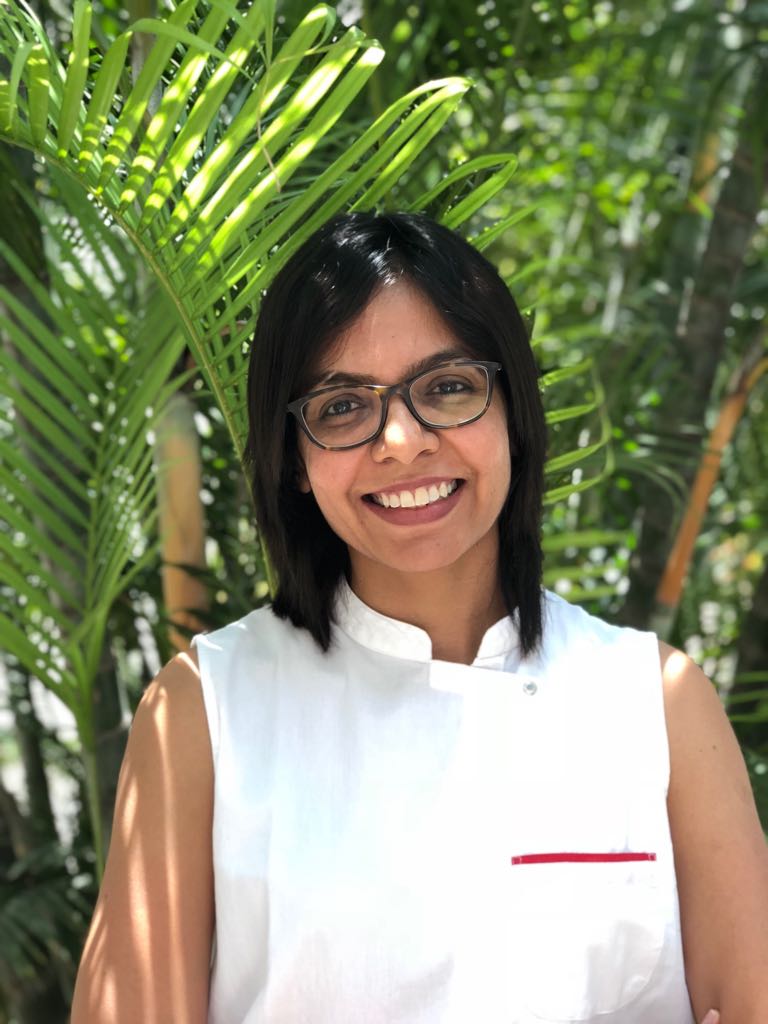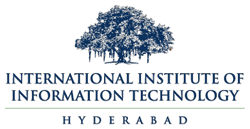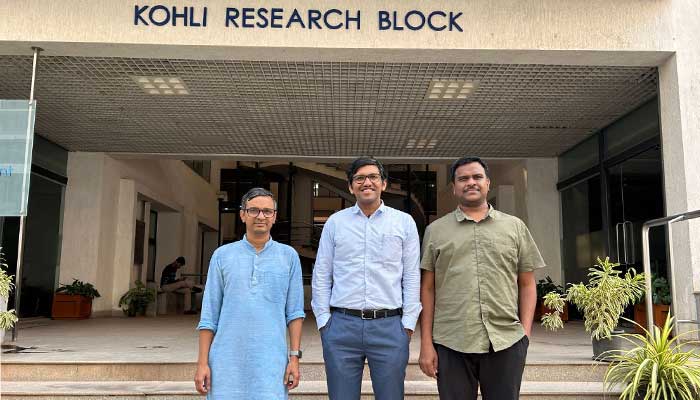Three professors at the International Institute of Information Technology, Hyderabad have received research grants by the Anusandhan National Research Foundation (ANRF) to grow and foster a culture of research and innovation in the country.
Prof. Chittaranjan Hens, Centre for Computational Natural Sciences and Bioinformatics, Prof. Karthik Vaidyanathan, Software Engineering Research Centre and Prof. Gowtham Kurri, Signal Processing and Communications Research Centre have been awarded the Prime Minister’s Early Career Research Grant initiated under the Anusandhan National Research Foundation which supports young researchers in initiating their research careers in a new institution with the help of a flexible budget and progressive initiatives for the ease of doing research.
Each research grant which is meant for young researchers no older than 42 years of age provides up to 60 lakhs plus overheads for a period of 3 years. The criteria for ease of doing research include flexibility to utilise resources under recurring heads, flexibility in manpower recruitment, travel (including international travel), contingency and overhead charges, as well as support for expenses related to open access publications and patent filing. Here’s a brief look at each of the IIITH researchers and their proposed projects.
Prof. Chittaranjan Hens, Center for Computational Natural Sciences and Bioinformatics (CCNSB)
Network scientist and statistical physicist Prof. Hens is looking at a spectrum of researchers who would benefit from his project titled,”Stability of networked systems: from ecology to the brain”. He explains that he is particularly interested in any domain where a large number of species or particles come together and interact with each other. “The interactions could be purely random or could follow rules, say from a correlated distribution of things,” he muses. From an ecological perspective, Prof. Hens is planning a deep dive into understanding how the biodiversity of a large ecosystem comprising of predators, pollinators, plants and more is maintained despite its sheer complexity. “The idea is to provide a mathematical framework to ecologists, and nonlinear dynamics researchers that can provide insights into how such a complex system is stable. The mathematical tools that we will be working upon will also help them predict how long stability will last and when some species may become extinct,” he mentions.
According to the professor, an identical framework could be applied in the healthcare domain, especially in the case of communicable diseases. “Consider a scenario like Covid where one infected person travels to another city or country, interacts with others, and spreads the disease. Here again, via mathematical modelling, we can predict how, when, and where the disease will spread, given prior knowledge of the interactions people have had in a sort of time stamp. It could also provide authorities with more information so that they can take the necessary decision of isolating a locality to contain the spread,” he says.
In a similar vein, neuroscience has a pertinent question: how can the global activation of neurons be sustained? Supporting critical brain activities that result from the coordinated activity of neurons depends heavily on neural connections. The professor’s suggested endeavour might provide fresh insight into the field of neuronal networks too.
Exploring Natural Phenomena
Remarking that it is a common theme in physics to understand macroscopic phenomena by studying the microscopic components, Prof. Hens points out that its applicability extends beyond traditional Physics. “Such exploration is used not just say, in the study of magnets and their composition of multiple microscopic tiny magnets but also in the study of brain or ecosystems arising from interactions of interconnected neurons or species.”
Prof. Karthik Vaidyanathan, Software Engineering Research Center (SERC)
Green is the new black for Prof. Karthik Vaidyanathan. At a time when the world is bullish on AI, he is looking at its dark underside. Deeply concerned about how tech growth ought to be balanced with environmental responsibility, Prof. Vaidyanathan’s project proposal is aptly titled, “Sustainable AI Systems For India” or ‘SustAInd’. As a researcher whose interests lie at the intersection of software architecture and ML, he is seeking to develop a software-centric framework for sustainable AI systems. “AI’s carbon footprint is quite high and continues to grow. Data centers currently consume about 2-3% of the world’s electricity and it’s only expected to increase. Plus the amount of water required to cool these centers is also increasing,” he observes. According to him, the idea behind the proposed framework is to provide guidelines that will allow anyone who is designing an AI system to do it in a more sustainable manner.
How Green Is Your AI?
Sustainability for Prof. Vaidynathan is however not limited to the carbon. “I want the framework to suggest practices that are not only environmentally sustainable but also sustainable from a cost and technical perspective,” he mentions, explaining that technical sustainability refers to designing and developing systems in such a way that the software systems remain efficient, maintainable and adaptable over a period of time. In addition to the guidelines, he would like to create a tool too that can continuously monitor and audit a system’s AI footprint so that appropriate changes can be made and the system can dynamically adapt its behaviour.
Fuelling Innovation Sustainably
For someone whose first foray into software sustainability engineering took place thanks to a course on the same during his PhD, Prof. Vaidynathan is now a poster boy for green AI in India. By the time he joined IIITH, he had dabbled in research on optimizing energy consumption in IoT devices, as well as in microservices based on geographical locations. At IIITH, the first project he proposed was on creating a software framework for sustainable systems. “Not AI systems specifically, but sustainable systems in general,” he clarifies. There is now a dedicated research group at the Software Engineering Research Center, SA4S (Software Architecture for Sustainability) which looks at software sustainability from multiple angles. “The Indian government has set a net zero goal to be achieved by 2070. One of the biggest challenges is that no one really talks about the impact of software (that will go into meeting this goal) on the environment. I’m very happy that this project was selected because it is an indication that as a country, we are looking in this direction and considering improving energy efficiency or enhancing sustainability of the technology. With India being one of the largest exporters of software, and coming into our own in the AI field, it’s very important that we be mindful of our carbon footprint,” signs off Prof. Vaidynathan.
Prof. Gowtham Kurri, Signal Processing and Communications Research Center (SPCRC)
If statistics is anything to go by, data breaches are becoming increasingly rampant: More than 422 million records worldwide were exposed during the third quarter of 2024. It is this kind of information leakage – one where sensitive data is unintentionally exposed to the public – that Prof. Gowtham Kurri is fascinated with. As a postdoctoral researcher, with a solid foundation in Information Theory, he began exploring machine learning and privacy. At IIITH, while continuing his research in these areas, he inadvertently gained exposure to private information retrieval — a phenomenon that allows an individual to retrieve or gain access to a piece of information from someone without revealing what they got — and developed an interest in it.
How Deep Is The Leak?
Prof. Kurri’s project proposal for the ANRF grant is titled Operational Approaches to Information Leakage and Applications in Information Retrieval and Statistical Learning. “The objective of the project is to develop a theoretical framework for new operationally motivated information leakage measures using tools from probability and information theory and to study the fundamental limits of information leakage in private information retrieval and privacy-preserving machine learning algorithms,” he explains. He adds that interestingly enough, information leakages can occur through machine learning models too when the models inadvertently reveal/leak sensitive information about the training samples. “For example, an attacker could exploit membership inference attacks to determine whether a particular data point was part of the training sample set, potentially compromising sensitive user information,” he says.
At the end of the grant period, the professor hopes to establish a unified framework for privacy analysis with the potential to influence privacy standards across various sectors, shaping both the theoretical and practical evolution of privacy-preserving technologies. “I expect to publish some research findings and hope to mentor and graduate a few students,” he sums.

Sarita Chebbi is a compulsive early riser. Devourer of all news. Kettlebell enthusiast. Nit-picker of the written word especially when it’s not her own.


Next post